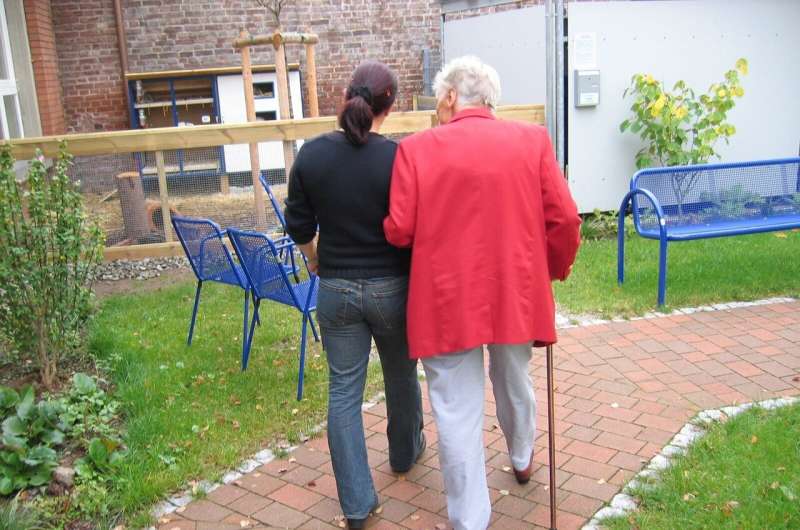This article has been reviewed according to Science X's editorial process and policies. Editors have highlighted the following attributes while ensuring the content's credibility:
fact-checked
trusted source
proofread
Too few caregivers and too many patients: A bad combination for Norway's elderly in rural areas

Aging baby boomers are swelling the ranks of elderly across the Western world, with Norway no exception.
We know Norway's elderly population will increase, and it's likely there will be far fewer health care professionals to take care of them. The last 20 years have seen the population of Norwegians over the age of 80 increase by 40,000; the percentage of people aged 67–79 has grown by 37.9% over the last 10 years.
Over the next 20 years, there will be 250,000 more Norwegians over the age of 80.
The aging crisis has been predicted for a long time, but the country still doesn't appear to be prepared.
Research now shows that elderly people living in rural areas have higher mortality rates if they are discharged to a municipality under pressure.
Elderly people over the age of 70 who live in a municipality with fewer than 10,000 inhabitants are particularly vulnerable.
More than 350,000 elderly people involved in the study
Gudrun Maria Waaler Bjørnelv is an associate professor of Health Economics at NTNU. Her work has her concerned that municipal authorities in Norway may not be prepared for an aging population.
Working with a research team from NTNU, St. Olavs Hospital, Trondheim Municipal Authority and SINTEF, she has studied all Norwegians over the age of 70 who were admitted to emergency departments from 2012 to 2016.
That amounted to just over 350,000 people.
This group of elderly people had almost 900,000 emergency hospital admissions during this period. The researchers followed them for 30 days after the day they were admitted. The research is published in the Nordic Journal of Health Economics.
Nursing and care services that were under pressure led to increased mortality in elderly who were under their care, and that elderly people in small municipalities had the highest mortality rate.
A small municipality was defined as having fewer than 10,000 inhabitants. According to Statistics Norway, 70% of Norwegian municipalities in 2016 had fewer than 10,000 inhabitants. In total, 17% of the population lives in a small municipality.
Increased mortality rates in pressured municipalities
"Previously, it was thought that small municipalities do better than large municipalities, because they have fewer patients in hospitals waiting to be discharged to the municipal services. Our findings, however, indicate that small municipalities are more vulnerable during periods when the demand for nursing and care services is higher than the municipality can supply," says Bjørnelv.
She points out that small municipalities may experience more pressure regarding demand for available nursing home places and health professionals.
"This may make them more vulnerable to fluctuations and pressure on health services," Bjørnelv said.
To investigate how mortality rates among patients changed, the researchers relied on information regarding the amount of pressure individual municipalities were under.
The process is as follows:
As soon as a person is ready to be discharged from a hospital, the home municipality of the patient must either receive the patient in that municipality or pay a daily fee to the hospital until the patient is moved home to the municipality.
Need to know more about municipalities under pressure
"If there is a build-up of patients who are ready to be discharged from hospital to one municipality, this suggests that the municipal services such as home care and nursing homes are under pressure. It shows that they do not have the capacity to receive these patients," says Bjørnelv.
The study investigated how mortality rates changed if people were admitted to emergency departments during periods of increased pressure in the municipality. That would be during periods where many people from the same municipality as the acutely admitted patient were waiting to be discharged from hospital.
"We need to take a closer look at the municipal services, and it needs to happen now," says Bjørnelv. She believes that we must find out more about what happens when a municipality is under pressure.
"Is there a greater tendency to move some people home after hospitalization rather than to a municipal short-term care facility if the municipality is under pressure? Is it better for elderly people from a pressured municipality to longer in the hospital—without the municipality having to pay a 'fine' to the hospital? What is best for the patient?" Bjørnelv said.
More information: Gudrun Bjørnelv et al, Mortality and subsequent healthcare use among older patients discharged to a municipality with excess demand for elderly care, Nordic Journal of Health Economics (2024). DOI: 10.5617/njhe.10145





















